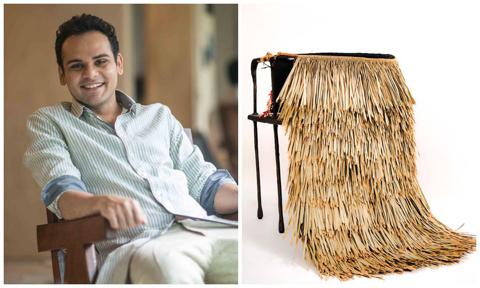
When designer Ashiesh Shah says he wants to be an indelible mark in the history of Indian arts and crafts revival, he means business.
Shah recently became the first Indian designer to have his works featured on the prestigious international platform The Invisible Collection. Co-founded by entrepreneur Anna Zaoui and ex-creative director of Dior Isabelle Duvern-Mallevays, the e-commerce website claims to be the first online platform to host a curated collection of works by the world’s best interior designers, Shah being one of them.

“It’s been a long journey,” he says. The designer says this is a giant step forward into putting traditional Indian arts and crafts on the world map in a substantial way. “India has never been looked at as a serious high-end design country. So I really felt that someone needs to change that. We need to start talking about India as a design-forward country. We have a culture that is so rich in its heritage, so why not? How will craft succeed in the home and decor space in India?” he asks, “Right now if you think of Indian crafts, you think of souvenirs picked up at the airport or a mela that has been gifted as a keychain or something like that. It’s never taken seriously, people mostly don’t even know the name of the craft they’re buying. I bet most people can’t even name five craft forms of India, forget 10.”
The designer established The India Design Fund during the pandemic to bring the design, construction, and craft industries together to support construction workers, migrant laborers, and artisan groups whose livelihoods, communities, and craft traditions are at risk.
“I thank all my colleagues, and everyone who worked with us, from the bottom of my heart for making it possible. This is something I’m extremely passionate about.”
Through his atelier, the designer wants to integrate these craft forms into the design space, both Indian and global (Shah doesn’t like boundaries, he says) and platforms like The Invisible Collection help immensely. “If you look closely at our practice at the atelier, you’ll notice that we’re working with different villages and we’re naming the pieces after the villages. So if we’ve worked on something using the indigenous craft of Channapatna region, then the piece would be titled ‘Channapatna Light’ or ‘Channapatna Stools’. In our own way, we’re trying to make these names more commonplace so that people start recognising the names of these craft forms or the villages they originate from,” he says, “The support of The Invisible Collection, and a couple of other big international galleries, is going to go a long way in making this happen. I’d like to imagine a time when an English gentleman would call us and enquire after the ‘Channapatna Lights’. We’re giving the traditional Indian crafts a contemporary language. The design intervention by the atelier is allowing them to be reinterpreted to appeal to modern sensibilities.”

It all ties back to his core design philosophy of wabi-sabi. The Japanese concept follows the principle of finding beauty in imperfection, something that ties in perfectly with Shah championing indigenous craft forms. “If you look at any form of craft, there is inherent wabi-sabi in it. The philosophy is that you can find beauty in imperfections. Anything that is handmade will never be flawless, but that’s exactly what makes it much more unique and beautiful than anything made in a factory,” he says, “Handmade will always have imperfections and that’s beautiful but that depends on how you look at it. You need to want to see the hand of the karigar in the craft and that is the beauty of wabi-sabi.”
Shah concludes our conversation by expressing his optimism at the state of the Indian design scene, “Pre-2000 India didn’t have a design sense because we were still stabilising from a lot of events. Now we’re seeing young artists and designers exploring the space like never before. I see a lot of young artists explore boundaries of art and design, through different materials and technology.”
- Quick links
- Ashiesh Shah
- interior designers





